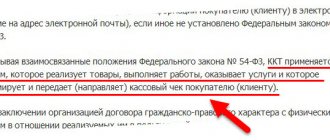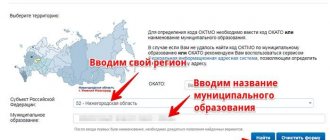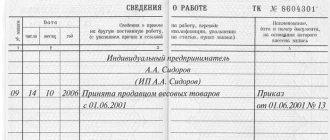If a company or individual entrepreneur purchases any goods from an individual, a purchase and sale agreement is drawn up, as well as a purchase act. A sample of this document, a ready-made version of filling it out and rules for its preparation - all this is discussed in detail in the article.
Blank procurement act form (word)
Sample of filling out a purchase act from an individual (word)
Main purpose
Each company (and individual entrepreneur) has the right to purchase goods not only from legal entities (or other individual entrepreneurs), but also from private citizens. These products can be used in the future for any purpose:
- resale for the purpose of profiting from the difference in price;
- storage for a certain period for the purpose of further sale;
- direct use in production as raw materials (for example, the purchase of food products for the manufacture of other products).
In any case, citizens can purchase goods from:
- commercial enterprises (LLC, PJSC and others);
- individual entrepreneurs;
- non-profit companies for their own needs (for example, charitable, educational organizations, religious and public associations and others).
At the same time, they must be of proper quality, which is confirmed by relevant documents (for example, a veterinary certificate for meat).
The purchase is a normal sales transaction, so a corresponding agreement is drawn up. The parties can carry out a transaction one-time or periodically over a certain period of time. A so-called procurement act must be drawn up for the purchase and sale agreement, which confirms several facts at once:
- The fact of concluding a purchase and sale transaction with a detailed description of the product - name, quantity, amount for each item and the total amount of the transaction.
- The fact of transfer of a product from the seller (individual) to the buyer (legal entity or individual entrepreneur).
- The fact that there are no complaints about the quality and quantity (package) of the buyer’s products in relation to the seller.
NOTE. Since the procurement act indicates an actually completed transaction, it is drawn up and signed only at the time of transfer of products, and not in advance.
Features of citizen participation in government procurement
Purchasing from an individual by a legal entity is a traditional practice for our country.
Even before the revolution, government supplies could be carried out not only by a merchant, but also by an ordinary person. Is this the case today? Can an individual participate in government procurement? Part 4, clause 3 No. 44-FZ confirms that any citizen, including those not registered as an individual entrepreneur, can participate in the tender. Government customers can also engage them as experts for situations specified by law (Part 1, Clause 2, Article 41 No. 44-FZ).
But these suppliers cannot participate in tenders intended only for SMP and SONKO (Article 30 No. 44-FZ), because do not belong to such categories of organizations (Federal Law No. 209-FZ).
Please note that recently sites for joint purchases (SPs) have appeared on the RuNet. These kinds of sites for joint venture procurement of individuals have nothing to do with government procurement. There are a number of features in public procurement that prohibit collective participation. For example, clause 8 of Art. 51 44-FZ indicates that a work of art created jointly by several citizens is submitted in one application on behalf of one participant.
Instructions for filling out the document
It’s quite easy to draw up a document yourself or fill out a ready-made form. It is important to carefully enter all the data with a blue or black pen (a printed version is also allowed). The act in form No. OP-5 contains the following information:
- Short name of the company (for example, Smartcon LLC).
- Codes for OKUD and OKPO.
- The name of the structural unit (for example, warehouse or sales department), if there is one.
- TIN of the company and its type of activity in accordance with the OKDP system.
- “I approve” visa, which is registered by the general director (or another authorized person - for example, his deputy): date, signature, signature transcript (last name, initials).
- Number and date. Numbering can be used consecutively, by calendar year. It is also possible to use another system at the discretion of the company management.
- Next, the place of purchase is indicated - the address is written down to the exact name of the locality. Common abbreviations are used: d. - village, g. - city, etc.: for example, Omsk region, Omsk district, Putintsevo village.
- The following is the full name and contact information of the parties:
- purchasing manager (for example, supply department manager) – full last name, first name, patronymic;
- Full name of the seller - a private individual (also in full).
- Next, the names of the agricultural products that were purchased are written down in tabular form:
- titles;
- codes;
- name of the unit of measurement and its code in accordance with OKEI;
- the quantity of each product and its price accurate to the nearest kopeck (in the case of integers, “00” kopecks is indicated);
- total amount;
- the total cost of all products.
- The total amount is indicated on a separate line in words, kopecks are written in numbers - for example, “00” kopecks.
- Next, indicate all the details of the passport of the citizen from whom the products were purchased: series, number and others. The registered address is also written down.
- Then indicate the details of the individual entrepreneur registration certificate. If purchases are made by a legal entity, these lines remain blank.
- In the final part, it is necessary to indicate information about the certificate, which confirms that the seller has a personal subsidiary plot (by whom, when it was issued, in whose name).
- Income tax amount (13% of the total purchase price).
- At the very end there are marks:
- about receipt of money by the seller (signature, decryption of signature);
- on receipt of products by the buyer (signature and transcript of the signature of the responsible person).
Form OP-5 (purchase act)
Sometimes it is profitable for companies to purchase goods from individuals who are not entrepreneurs. For example, this applies to cases of purchasing products from a farm - this could be milk, butter, cheese, meat, etc.
Such cooperation is beneficial for both parties: the entrepreneur receives good products at a favorable price, and the individual can receive money for his work.
But can such costs be taken into account in expenses, what documents need to be drawn up in order for everything to be correct?
Purchasing food from the population is not prohibited. To reflect the receipt of goods, an organization or entrepreneur can use primary documents developed independently or use standardized forms. In this case, the unified form OP-5 (purchase act) can be used. This form is used to purchase products from the population.
The company can use the unified form unchanged or take the procurement act according to the unified OP-5 form as a basis and add the necessary details or delete unnecessary ones. However, it is worth remembering that in any case, the primary documents must contain all the required details.
Form OP-5 (filling sample)
So, the procurement act is used to formalize a purchase and sale transaction between an entrepreneur (organization) and an individual seller who is not an entrepreneur. The unified form OP-5 was approved by Decree of the State Statistics Committee of Russia dated December 25, 1998 No. 132. This resolution approved the forms of primary documentation for recording transactions in public catering.
The form is not difficult to fill out, but it can cause difficulties if the entrepreneur has never encountered the preparation of this document.
The form (purchase act, form OP-5) is filled out in two copies immediately at the time of purchase of agricultural products. Signed by the person who purchases the products and the seller who sells the products.
One copy of the purchase act is given to the seller, the second must remain with the buyer.
In the header of the form, you must fill out the standard details: name of the organization purchasing the products, structural unit, OKPO code, INN, type of activity according to OKDP, type of operation.
Next, form OP-5 “Purchasing Act” (we will provide a sample completion at the end of the article) contains the document number, date of completion and information that the act was approved by the manager, indicating the date of approval, signature and transcript of the manager’s signature.
The main part of the document contains the following information:
- Where the goods were purchased (place of purchase of the goods);
- Who purchased the goods (position and full name - last name, first name, patronymic)
- From whom the goods were purchased (last name, first name and patronymic of the individual)
Then the purchase act in form OP-5 contains a table of 7 columns, which contains detailed information about the purchased product:
- Name of the product, characteristics of the agricultural product;
- Agricultural product code;
- The name of the unit of measurement in which this product is measured;
- Unit of measurement code according to OKEI;
- The quantity of goods that was purchased by the buyer;
- The price of the goods indicated in rubles and kopecks;
- The total amount for a given product name;
- At the bottom of the table there is a “Total” line to indicate the total amount that the buyer paid to the seller for the product.
Form OP-5 (you can find it at the end of the article) contains detailed information about the parties to the transaction, which must be filled out in words:
- Transaction amount – the total amount for the product that the buyer pays to the seller;
- Detailed passport data: series, by whom and when issued;
- The home address is indicated on a separate line;
- Data on the certificate of state registration of an entrepreneur carrying out his activities without forming a legal entity: name of the body that issued the certificate, date of issue of the certificate;
- The name in which the certificate was issued, TIN, code of the tax office that assigned the TIN;
- Name of the authority that issued the certificate of the presence of a personal subsidiary plot, date of issue (for residents of the Russian Federation);
- The name in which the certificate was issued;
- The amount of income tax that was withheld;
- The amount of money that the seller received for the goods sold;
- Signature and transcript of the signature of the seller who received the money;
- Buyer's signature confirming receipt of products.
Below you can download the procurement act (form OP-5). The completed procurement act confirms the fact of the transaction, so the necessary information must be filled out correctly and in full. If the seller, an individual, refuses to provide full passport data or sign the document, the act will be considered invalid.
Form and sample act 2021
Each company or individual entrepreneur has the right to independently decide which form is more convenient to use:
- There is a unified form No. OP-5, which until recently was used everywhere as a single option.
- You can also develop a sample yourself, taking into account the specific features of the procurement process.
The following is a blank form of a single form - it can be used as a sample when drawing up your own version of the procurement act.
And here is the finished sample:
As for your own form, when developing it you should take into account that the document should contain at least the following information:
- purchase amount;
- signature, transcript of the signature of the head of the enterprise;
- Date of preparation;
- who is responsible for the transaction (last name, first name, patronymic in full and job title);
- information about the seller (full name, passport details, registration address, TIN);
- what goods (products) were purchased - in tabular form (name, quantity, amount for each item and total transaction cost);
- total amount in words;
- the seller’s signature stating that the money was received in full;
- the buyer’s signature indicating that the products of proper quality were received in full.
You can use the following form as a basis:
And here is a finished sample, which can also be used as one of your own options.
The document is always drawn up in 2 original copies - one remains with the seller, the other with the buyer. Both copies have the same legal force and can be used as primary or additional evidence in legal proceedings. The use of a seal is optional - if the company does not use imprints in its work, then it is enough to only put a signature on it.
We arrange the purchase of goods from individuals
If the individual is not a sole proprietor, then most likely the burden of completing the documentation will fall on the acquiring organization. The organization determines which document to draw up independently. As a basis, you can take, for example, the form of the procurement act No. OP-5 (approved by Resolution of the State Statistics Committee of December 25, 1998 No. 132). The main thing is to ensure the presence in such a primary account of a number of mandatory details, which include (Part 2 of Article 9 of the Federal Law of December 6, 2011 No. 402-FZ):
- Title of the document;
- date of document preparation;
- name of the organization that compiled the document;
- the content of the fact of economic life - the acquisition of goods;
- the value of the natural and (or) monetary measurement of a fact of economic life, indicating the units of measurement (that is, how much, what and at what cost was purchased);
— the name of the position of the person (persons) who completed the transaction, operation and the person(s) responsible for its execution;
- signatures of persons indicating their surnames and initials.
If the goods are paid for in cash, it is convenient to include in the act information that the seller received money for the goods. At the same time, for the purchase of goods from individuals, the limit of cash payments under one contract in the amount of 100,000 rubles does not apply (clause 5 of the Central Bank Directive No. 3073-U dated October 7, 2013).
The form of the primary document adopted by the organization, used when purchasing goods from individuals, must be fixed in the Accounting Policy of the organization for accounting purposes.
Let us give an example of a procurement act that can formalize the purchase of goods from individuals. The act is drawn up in 2 copies.
purchase act in Word format is possible.
Purchase procedure from individuals
The buyer should also understand the general procedure for transactions. The calculation occurs immediately at the time of transfer, and two options are possible:
- Cash payment - money is transferred from the company's cash desk, or an employee buys goods at his own expense and draws up an advance report, for which he then receives compensation in full. At the same time, it is extremely important to indicate in it that the payment was made in full and the seller has no complaints.
- In the case of non-cash payment, the sample document does not change, but a note is made about which account and within what time frame the funds should be transferred.
At the same time, the company must convey to the seller that he himself is obliged to pay personal income tax, i.e. declare your income to the local tax office, since the company purchasing the goods does not bear any responsibility for this transaction.
NOTE. Unlike settlements between legal entities, as well as between individual entrepreneurs, when purchasing products from a private person, there are no restrictions on the operation.








